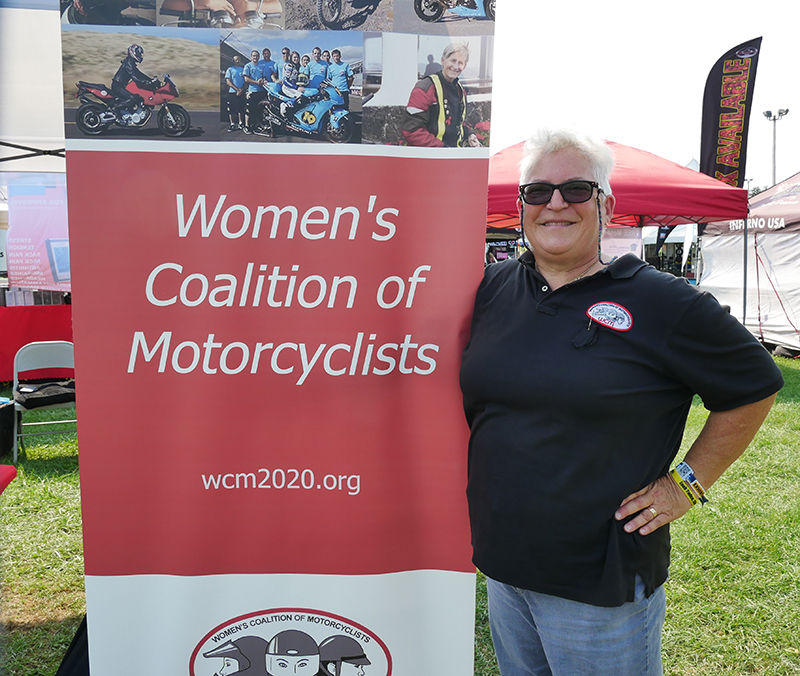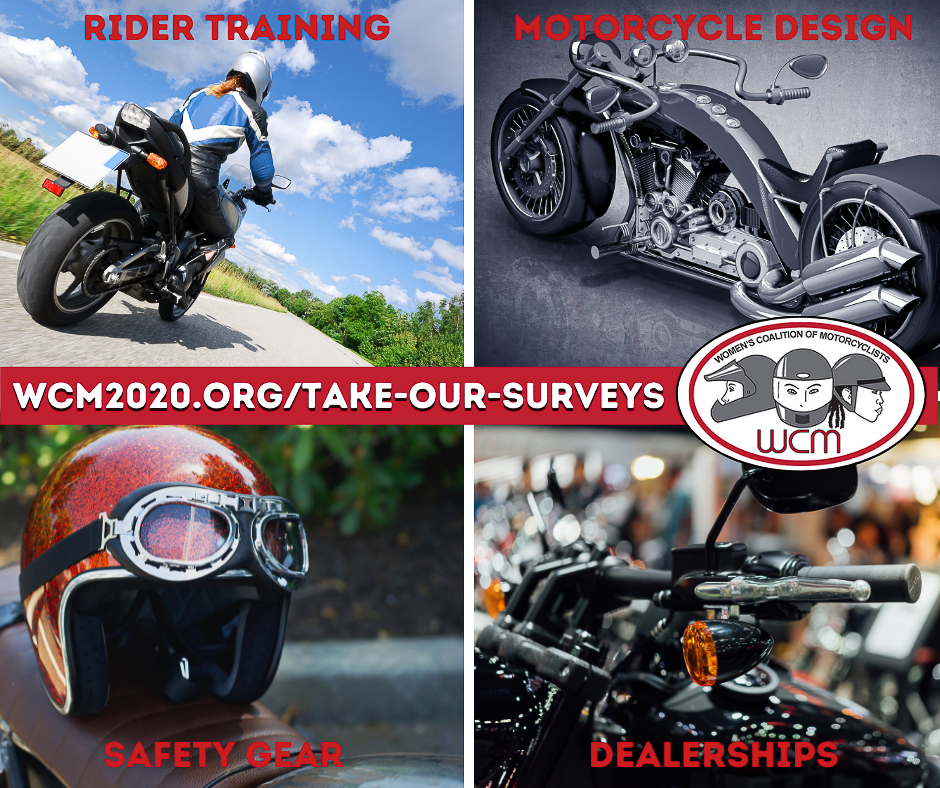We’ve been hearing about the Women’s Coalition of Motorcyclists (WCM), a non-profit advocacy organization working to improve the relationship between women riders and the motorcycle industry. The organization has been making progress toward the goal of encouraging more women and girls to embrace motorcycling as a means to increase the motorcycle industry’s respect for women as riders and customers. We had a chance to interview Lisa Malachowsky, WCM Board Chairwoman, to learn more about the organization and their exciting new initiative.
WRN: Hi Lisa, Thanks for joining me, so who is the WCM?
WCM: WCM is run by a small group of dedicated volunteers who are passionate about riding and furthering motorcycling accessibility for women. What we’re working to achieve is highly ambitious, and we always need more dedicated women riders to join our team to continue promoting women in motorcycling.
WRN: Lisa, we’ve collaborated with WCM a number of times over the years. Why was WCM initially formed?
WCM: In 2013, a group of women representing some of the key women’s motorcycling organizations created this coalition to be an umbrella group to unite those organizations in force. The mission that emerged for that coalition was to double the number of riders by 2020. In hindsight, we realize that was not a measurable goal with the questionable industry data on women's ridership. Indeed, we know women's ridership is on the rise but speaking from a unified voice was then, and still is, a challenge. And despite the growth, women are still a minority in the overall number of motorcycle riders.
WRN: I see what you are saying. We (women) are reportedly 19% of the 2-wheeled ridership but there are a lot of questions about the validity of that number and some speculate it is higher. But whatever the actual figure is, many of us still feel we are marginalized and ignored as an insignificant part of the motorcycling marketplace. How does the overall mission of WCM intend to address this?
WCM: We recently reworked our mission to focus on the advocacy that we feel we can realistically achieve. Instead of focusing on increasing the number of women riders, we are refining our focus to improve the landscape for, and awareness of, women riders in the industry. With crucial changes at the interface between women riders and the industry, we can create a more approachable and appealing environment that naturally attracts more women riders and shows the industry our devotion as well as our purchasing power.
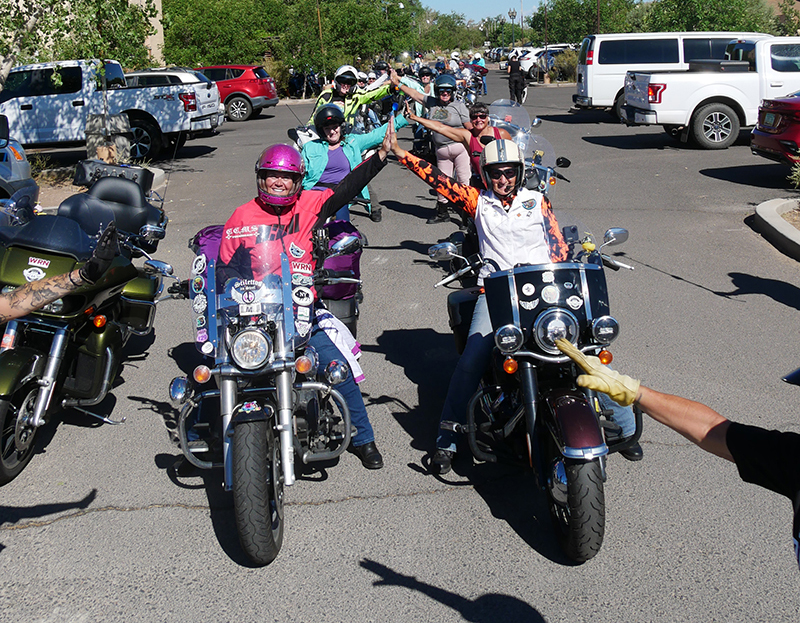
WRN: That is a fantastic goal. I’d like to hear more about the WCM’s plans to move the needle.
WCM: Currently, we are conducting an extensive research project to bring credible, actionable data to the motorcycle industry about what women riders want and need. In the past, we focused on providing scholarships to specific motorcycle training organizations to help women access more training for the different types of riding. But as we have focused on a more achievable mission, the survey research project will be our focus and we plan to evolve it into more detailed surveys and focus groups.
WRN: Why did you decide to conduct surveys?
WCM: Honestly, because there is a lack of actual, detailed and continuous data about women’s opinions in various aspects of motorcycling. There are endless anecdotes. Our goal is to get beyond anecdotes and bring the industry the data it can build changes and success around—reliable data that can’t be ignored or dismissed. We are passionate about creating the framework to get past the “shrink it and pink it” industry standard.
WRN: Oh, yes! Shrink it and pink it—it’s amazing that is often still the key marketing strategy for so many powersports companies! So, what are the topics of WCM surveys?
WCM: Our initial surveys focus on training, motorcycle design, gear, and dealer relationships. The questions are broad to start with and we hope to get more detailed and even develop focus groups as the project evolves.
WRN: Those are certainly key concerns for women, but how exactly did you arrive at those topics to start out with?
WCM: After some brainstorming and researching the data that is and isn’t out there currently, those topics seemed to form the base of the pyramid—the main topics that need to be addressed for women riders in the motorcycling industry.
WRN: What topic has proven to be the most compelling to women riders?
WCM: The most engaging topic so far has been motorcycle training, but we’re quickly seeing motorcycle safety gear catching up.
WRN: I’ve been involved in women’s motorcycling for decades, and gear has certainly been top of mind for women riders for all of this time. It surprises me that sometimes it is still a hot topic. Did you have any other surprises when looking at the data?
WCM: Yes! Based on anecdotes, we anticipated that most women want to be in women-only training classes—across all age groups. However, our data shows that it only matters to 40 years old and older respondents. Women in the younger age groups did not consider this characteristic a must-have when taking training classes.
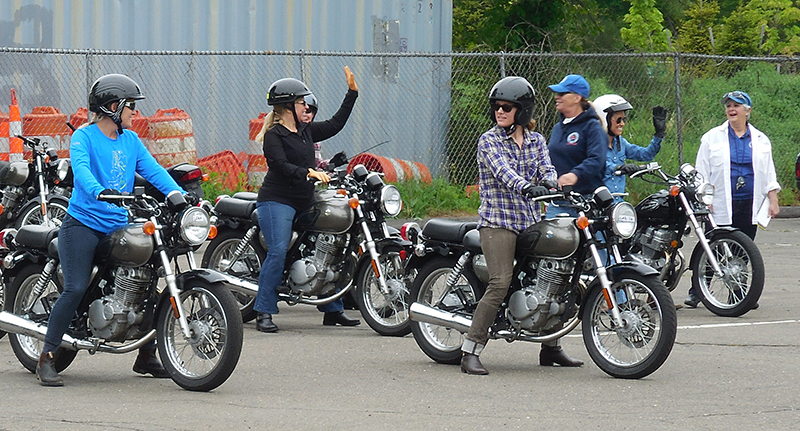
WRN: Huh, I'm always interested in the way the younger generation experiences motorcycling differently than we did/do. Do you have an actual data analyst in your group working through the findings?
WCM: Yes, that’s Michelle Cleveland. She’s our primary data cruncher and has been instrumental in helping us manage the very complex data analysis.
WRN: Tell us about the team that developed and rolled out the surveys.
WCM: The CAB (Coalition-At-Large Board) consists of 5 passionate women riders—Bobbie Carlson, Michelle Cleveland, Wendy Crockett, Lisa Malachowsky, and Val Weston. They have worked tirelessly for the last three years to put these surveys together. They take this volunteer job seriously and have dedicated hundreds of hours to the effort.
WRN: That is a serious passion project and I know you’ve been excited to release the surveys. What has your strategy been for the roll-outs?
WCM: We rolled out each survey one at a time using email lists and various social media platforms. We contacted our known email contacts, Facebook groups, Twitter, and Instagram. We have also promoted the surveys at all motorcycling events that our volunteers have attended since we started this project.
WRN: What have been your biggest challenge in getting the word out about the surveys?
WCM: The biggest challenge we’re facing is getting a broad demographic response—one that crosses all ages, races, riding styles, etc. We genuinely want to represent all women riders, so we need all types of women riders to tell us how they feel about these aspects related to motorcycle riding in order to succeed in that vision.
WRN: WIth a grassroots effort like yours, it must be difficult to be everywhere the potential respondents are to gather enough responses to be statistically relevant. What number of responses do you require of a topic before starting to analyze the data?
WCM: To achieve statistically significant results, we are looking for at least 1500 responses to each survey before drawing initial conclusions. That’s the minimum we’d like to see. The more responses we get, the more representative the data will be of the women rider population.
WRN: Wow. So once you achieve the data collection and analysis, what is your goal for compiling and sharing the information?
WCM: We are willing to share the results in various ways with any interested motorcycle organization. We hope to publish periodical articles and present the results at key industry events. For example, late last year, Bobbie Carlson presented some preliminary results of the training survey at SMSA, the State Motorcycle Safety Association, which was received with enthusiasm. We aim to get the results in front of every appropriate industry audience.
WRN: Why do you think this information is essential?
WCM: As I mentioned earlier, there is little credible data collected from women riders in an unbiased, brand-agnostic way. Many assumptions have been made about women riders’ opinions that may or may not be accurate. Our goal with this data is to identify how they actually feel about their experience in motorcycling with regard to the motorcycle products they use, their buying habits, their training needs, their experience at dealerships, etc.
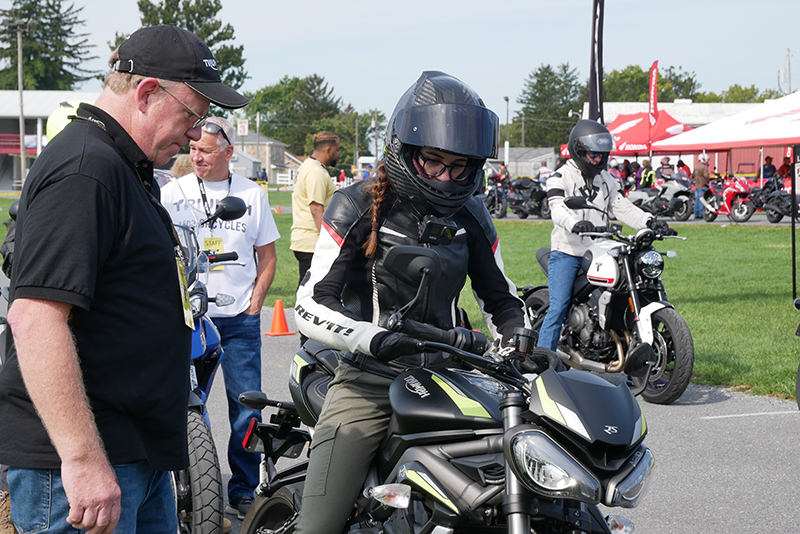
WRN: There has been some interest in this kind of information over the years, but do you expect the motorcycle industry will openly receive the data?
WCM: We're hopeful that our systematic, objective approach will resonate with industry leaders and be taken seriously.
WRN: What do you hope the long-term result of your surveys will be?
WCM: We hope that our credible data will inform the decisions of industry leaders in serving the largest growing segment in motorcycling. We’re optimistic that our information will help them improve products and services for women riders. With industry interest and support of this project, we’re confident we can dive to great depths of women riders' wants and needs that will transform the industry and grow women’s ridership and improve the female riding experience.
WRN: What do you hope will be the long-term result of WCM?
WCM: We hope that women in motorcycling will be normalized to the extent that we exist as equals in the industry. Ideally, we would live in a world where WCM doesn’t need to exist.
What we’re trying to achieve is highly ambitious. It requires a tremendous amount of time and energy, so, until the day WCM isn’t needed, we’ll always be looking for passionate women riders to join this team dedicated to promoting women in motorcycling.
WRN: Well I hope that WRN's and our reader's support will help with your projects. How do women riders find and take the surveys?
WCM: Please go to this link at wcm2020.org to find our surveys. Thanks so much for talking with me today.

